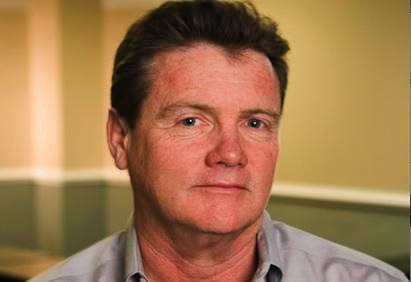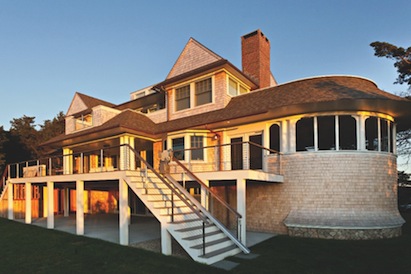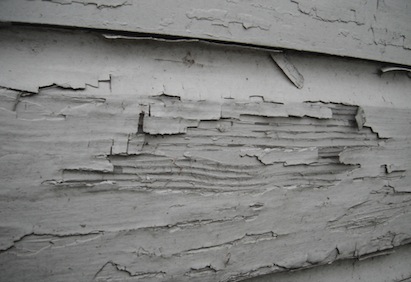To build better homes, the industry—and homeowners—should recalibrate their thinking on building science, says Gord Cooke, president of Building Knowledge Canada and partner of Construction Instruction.
Arguments against efficient construction practices and regulations remain the same—it's frustration with building codes and associated costs. But when the communication approach to building science is recalibrated, it's easier for homeowners or builders to understand the value, notes Cooke.
"I always ask in a room of builders or salespeople, 'Who here lives in an uncomfortable house?' And maybe one person puts up their hand. And then I'll say, 'Who here lives in a house where one room is a lot harder to heat and cool than another room?' And magically a third of the hands will go up," says Cooke in this installment of Taking Care of Business. "So the word 'comfort' doesn't mean anything to anybody ... The word 'cold.' Or hot or sweaty nights—that means something. So when we ask people questions, we have to ask questions that meet them the way they live."
This sales and education tactic of recalibration works to win buyers over quickly, notes Cooke, "And the good news is, you only need to find three or four until the homeowner or buyer goes, 'Oh, I get it.'"
Watch the full interview or read the transcript below:
Timestamps:
00:00 Introduction to Gord Cooke and His Expertise
01:15 Early Career and Building Science Beginnings
03:26 The Importance of Air Tightness and Ventilation
07:51 Building Science Principles and Practices
13:36 Innovations and Future of Building Science
20:16 Recalibrating Our Thinking in Building Science
21:09 Understanding Customer Expectations
22:04 The Importance of Continuous Education
23:42 Addressing Homeowner Concerns
25:15 Effective Sales Strategies for Builders
29:29 Challenges and Innovations in Building Enclosures
31:57 Introduction to Construction Instruction (CI)
35:30 How to Connect with CI and Final Thoughts
Transcript:
Duane Johns (Host):
Our guest today is a partner in Construction Instruction, CI, and President of Building Knowledge Canada. He is a professional engineer with over 30 years of experience in the low and high-rise residential building industry as an educator and industry consultant. Combining building science principles and his strong, effective communication skills, he shares his insights with passion across North America. He advocates for better building practices and cost-effective methods for simultaneously improving the energy efficiency, health, comfort, and durability of new and existing homes. It is my pleasure to have Gord Cooke join us for this edition of Taking Care of Business. Welcome, Gord.
Gord Cooke (Guest):
Uh, thank you very much, Duane. I appreciate the opportunity. I always enjoy chatting with you. Got the hat on, um, you know. I appreciate that. I was going to give you that shout-out right away—Jimmy Gobert, gotta promote, gotta promote, no doubt.
Duane:
Well, again, I appreciate you taking some time to join us. This is another, I guess we would say, episode or interview in this Taking Care of Business series that I'm doing with custom builders. We’re covering a broad range of topics, and one of the ones we were thinking about tackling—and will have several episodes on—is building science, high performance, and things like that. But I said, you know, I know somebody that I really respect, and I know we’ll have a great conversation. So, we’re going to dive right in.
As we do, why don’t you just tell us a little bit about your journey as an engineer, educator, and industry consultant? You know, kind of where you started and how you got to where you are today.
Gord:
Sure. My start in the industry was in the mid-'80s, and I was designing and building on behalf of a small manufacturer—something called a heat recovery ventilator, which I suspect most of your listeners will know what it is, but I challenge you to think: who would have known what that was in 1984?
As I was trying to promote those products, builders would ask, “Why do I need that?” and I’d say, “Because you’re building tight houses.” And they’d respond, “Am I?” I said, “I don’t know.” So, I bought a blower door, started testing houses to see if I could promote the concept. Then I found out they weren’t particularly tight. Builders would ask, “Should they be tight?” and I’d say, “I don’t know, I think so.” And they’d say, “Well, can you tell me more?”
So, I took some training to figure out how to make houses tighter, of course. In other words, I was really just trying to promote a technology and found out it was part of a much larger system, right? The house is a system. In fact, that’s a good old Canadian phrase—house as a system. Everything interacts with everything else.
What appealed to me most as an engineer was this idea of an industry that’s very complicated. All your listeners know that, all your participants, I mean—what could be more intricate and more complex than building a custom house, right? A collection of 12 to 15 separate sub-trades over a building site that might take a year and a half or two years to complete. A collection of materials, building for homeowners who have no idea what it takes to build a house—it’s very, very challenging.
So, to interject this idea of some science, how some things impact others, was appealing. I was always able to say to builders, “You guys experience things in the field; some of those I can explain with science, and that might help you avoid issues in the future.” That was always a nice mix. Builders would show me their experiences and challenges, and I was able to find the science behind it and suggest solutions. It’s always been really nice to feel like I’m contributing to this complex world and making things simpler for builders.
Duane:
Yeah, I remember some of the early days of blower door testing. What was it that made you realize air leakage and infiltration were really issues?
Gord:
It was actually very early on because I was making heat recovery ventilators in Saskatoon, Saskatchewan—the birthplace of much building science. At the research center there, Harold Orr was doing research on making houses tighter, followed by Dick Van Ee, who was doing research on making houses healthier. The two combined nicely.
Back in the day, we thought we could make houses just tight enough—a dynamic wall with just enough air coming in. But we realized that pressures in houses change day to day, hour to hour, season to season. Trying to control the holes and the amount of air coming through them was impossible. The only way to control the system was to make the building enclosure airtight and then introduce intentional ventilation. Back in the day, that could have been windows, but people don’t want to open their windows because of noise, dust, security, or energy costs. So, we had to give them another way to ensure proper ventilation. That was one of the first building science rules: Build tight, ventilate right.
Duane:
Build tight, ventilate right. So, how did things start to change as energy codes evolved and homes became more insulated? Did that drastically change things in the system?
Gord:
Absolutely. Initially, codes didn’t include things like high-efficiency furnaces for energy reasons. In houses across cold climates, we started using high-efficiency furnaces because they didn’t have natural draft chimneys, which could backdraft and create safety issues. Similarly, air tightness wasn’t included in the code for energy efficiency; it was to stop warm, moist air from leaking into cold cavities, preventing condensation issues. In both cases, the code changes for health and safety also happened to make houses more energy efficient.
Duane:
That’s really insightful. Building science touches on all these aspects. In simple terms, how would you define building science?
Gord:
It’s about understanding the flow of heat, air, and moisture across the building enclosure. We’ve created larger temperature differentials across our homes than in the past, and building science helps us manage how heat and moisture move through the building. It’s the study of how all these forces interact in a house.
Listen to the full interview above.
Related Stories
Editorial/Topical
Fresh Faces, Fresh Thinking
Fresh faces weren’t the only thing new at this year’s show; the thinking is changing, too
Editorial/Topical
Is your stock rising or falling?
Making sense of things and communicating those feelings is more important than ever. The last five years have dramatically changed the way your clients, your team, and even you see things.
Design
One-of-a-Kind Green Homes
These custom-built homes make a strong design statement while delivering a high level of energy and resource efficiency.
Leadership
Using strategic relationships to grow your business
A key area of business that many builders fail to master is strategic relationships. Mark Richardson offers tips for leveraging those around you to improve your business.
Editorial/Topical
Retirement redefined: Custom-built homes for aging in place
These custom homes were designed for retirement, but their owners are at very different stages. Here’s how they were planned for aging in place.
Leadership
14 ways to maximize profits
To be more profitable, custom builders must focus on efficiency and cost savings, while looking for opportunities to publicize their work and expertise.
Leadership
Latest lead paint changes represent wins for remodelers
The latest updates this summer to the Lead Paint Repair and Renovation Program rules that apply to pre-1978 homes were, all-in-all, a positive for remodelers










